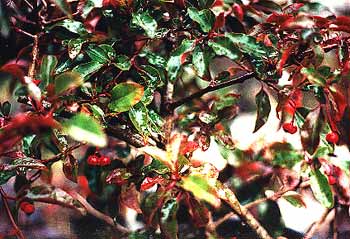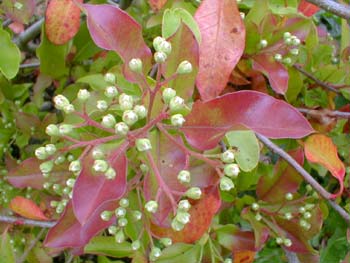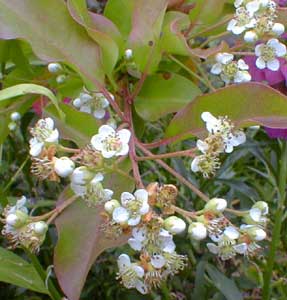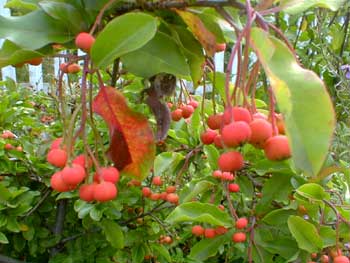
 Photinia davidiana (formerly Stranvaesia davidiana) is seriously underutilized, perhaps in part because the nursery trade hasn't come up with a decent common name for it.
Photinia davidiana (formerly Stranvaesia davidiana) is seriously underutilized, perhaps in part because the nursery trade hasn't come up with a decent common name for it. The natural species form is a tree offered as Chinese Stranvaesia or just Stranvesia, which can grow to twenty feet. The wavy-leafed variant undulata is usually only about five feet tall. And undulata prostrata, the prostrate form, is only three feet tall & mounding, with a five or six foot width, making it a handsome woody groundcover. This last is what we have planted in a roadside sun-garden.
The natural species form is a tree offered as Chinese Stranvaesia or just Stranvesia, which can grow to twenty feet. The wavy-leafed variant undulata is usually only about five feet tall. And undulata prostrata, the prostrate form, is only three feet tall & mounding, with a five or six foot width, making it a handsome woody groundcover. This last is what we have planted in a roadside sun-garden. These berries linger to the end of winter, while the evergreen leaves become brilliantly rusty red & dark plum to purple-black.
These berries linger to the end of winter, while the evergreen leaves become brilliantly rusty red & dark plum to purple-black. Stranvaesia is native of temperate woodlands & harsher open areas of Western China, North Vietnam, Taiwan, & in very rugged subalpine areas of Sumatra & Borneo.
Stranvaesia is native of temperate woodlands & harsher open areas of Western China, North Vietnam, Taiwan, & in very rugged subalpine areas of Sumatra & Borneo.